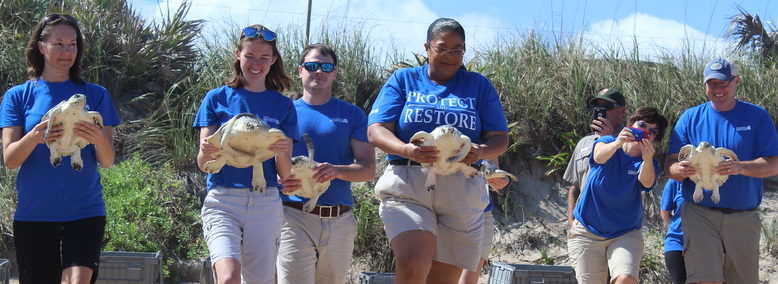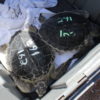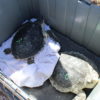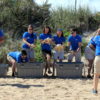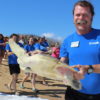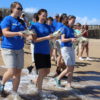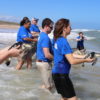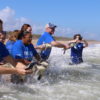The Florida Aquarium staff released ten endangered Kemp’s ridley sea turtles back into the ocean on Tuesday, February 20, after three months of successful rehabilitative care.
Nine of the ten turtles suffered through a cold-stunning event in the Northeast that began in early November 2017. These turtles, along with 38 other cold-stunned turtles, were transferred to Florida from the New England Aquarium in Massachusetts on December 8 as part of a multi-institutional effort including Clearwater Marine Aquarium, Mote Marine Laboratory and SeaWorld Orlando, to rehabilitate and release the turtles back to the ocean.
In addition, one of the nine turtles that was released is the Kemp’s ridley turtle named Quincy that appeared on The Florida Aquarium’s social media back in November. Quincy is from the previous cold-stun season, and he is named after Quincy, MA, the site of the sea turtle hospital where he first received care. He was transferred to The Florida Aquarium in December of 2016, along with nine other cold-stunned turtles.
Quincy and the other turtles were all treated for pneumonia, and most of them were released last Summer. Quincy, however, developed a front flipper injury and required additional specialized treatment. He received several months of low-intensity laser therapy and physical therapy to help improve mobility with his flipper, and became a bit of a local celebrity when a video of one of his laser treatment sessions was posted to The Florida Aquarium’s Instagram for Giving Tuesday. Quincy is a bit older and larger than the turtles from this season, but is swimming just as strongly, and is was ready for release.
“This is always an amazing feeling,” said Ari Fustukjian (Fuh-stook-shian), The Florida Aquarium’s Associate Veterinarian. “The path to getting these turtles healthy, strong, and back out into their native habitat is the results of countless hours of hard work and dedication by numerous institutions and individuals. Thanks to this commitment to care, these little guys will have a second chance, and will hopefully grow up to contribute to the next generation of Kemp’s ridley sea turtles.”
The term “cold stunning” refers to the hypothermic reaction that occurs when sea turtles are exposed to prolonged cold water temperatures. Sea turtles cannot regulate their body temperatures and as a result of an abrupt temperature change, they can quickly become hypothermic, unable to move and can wash ashore. Initial symptoms include a decreased heart rate, decreased circulation, and lethargy, followed by shock, pneumonia and possibly death.
Upon initial assessment, The Florida Aquarium found that all of these animals were mostly or completely unconscious due to cold exposure, and washed up on the beaches in New England. They were too cold to move or feed themselves, and can often develop secondary illnesses like pneumonia.
“The group of turtles we got this year were from earlier in the season than we sometimes see. This means they were rescued faster and brought in out of the cold sooner. While we did see pneumonia and superficial injuries, most of these animals were swimming and eating within a few days of arrival,” added Fustukjian.
The turtles received a course of antibiotics to treat respiratory infections and topical wound care for superficial injuries. One animal received a more intensive course of antibiotics after being diagnosed with a blood-borne infection, but has responded well and is on the mend.
Signs of improvement included improved blood work and radiograph imaging. In addition to improvements in these diagnostics, animal care staff monitors activity, appetite and weight gain.
“Being release-ready means that diagnostics no longer show signs of disease, that the animals are active and behaving normally, and that they’re capable of and swimming strongly and catching live food,” concluded Fustukjian.
For the latest on theme parks, attractions, dining venues and more across the region, be sure to follow Touring Central Florida on twitter @TourCentralFL & @androckb, and give our facebook page a like.

